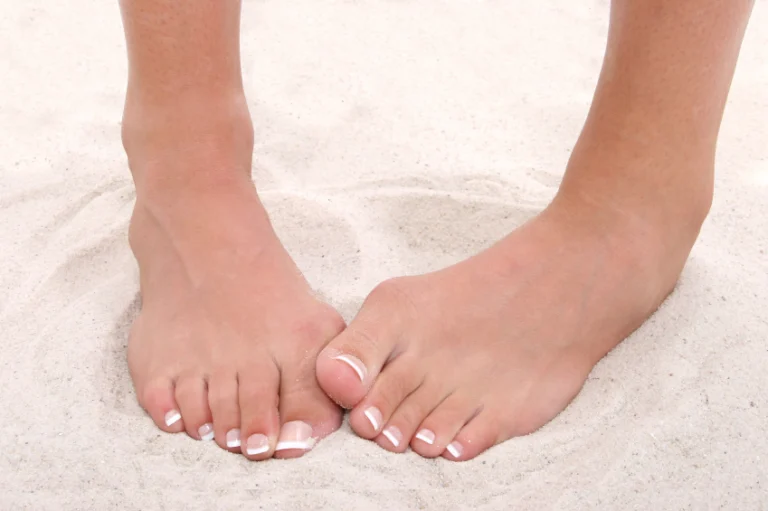Onychomycosis is a very common skin condition. However, patients struggle to find effective treatments. We understand the frustration of dealing with onychomycosis. At the Trillium Clinic, our solutions are designed to address onychomycosis at its cause, helping your nails heal and giving you the clear, healthy nails you desire. Begin your advanced onychomycosis treatments today, and say goodbye to those ugly, discolored toenails.
What is Onychomycosis

The signs of onychomycosis can vary depending on the type of infection and its severity.
Common symptoms include:
Thickened nails: Infected nails often become thickened, making them appear distorted or brittle.
Discoloration: The affected nails may develop yellow, brown, or white spots, patches, or streaks.
Crumbling or brittle nails: Infected nails can become brittle, prone to breaking or crumbling.
Changes in nail shape: The shape of the nail may be altered, becoming irregular or distorted.
Separation of the nail from the nail bed: In some cases, the nail may separate partially or completely from the nail bed.
Several factors increase the risk of developing onychomycosis, including:
Poor foot hygiene: Inadequate foot hygiene, such as not keeping feet clean and dry, can create an environment conducive to fungal growth.
Moist environments: Frequent exposure to moist environments, such as swimming pools, locker rooms, or sweaty shoes, increases the risk of fungal infection.
Age and health conditions: Onychomycosis is more common in older adults and individuals with certain health conditions, such as diabetes or a weakened immune system.
Nail trauma: Injuries to the nails or repeated microtrauma, such as from ill-fitting shoes, can make nails more susceptible to fungal infection.
What Causes Onychomycosis
Onychomycosis is primarily caused by various types of fungi, most commonly dermatophytes. These fungi thrive in warm and moist environments, making nails susceptible to infection. The infection can occur when the fungus enters the nail bed through a tiny cut or separation between the nail and the skin.
How is Onychomycosis treated
Onychomycosis can be challenging to treat, and the chosen treatment may depend on the severity and location of the infection. Treatment options include:
Oral antifungal medications: Prescription medications taken orally can help eradicate the fungus from within the body. These medications are typically taken for several weeks or months, depending on the extent of the infection.
Topical antifungal medications: Over-the-counter or prescription antifungal creams, ointments, or nail lacquers can be applied directly to the affected nails. However, topical treatments may not be as effective for severe or deeply rooted infections.
Nail debridement: Trimming, filing, or removing infected nail material can be performed to reduce the thickness and improve the effectiveness of topical treatments.
Laser therapy: Laser treatment can be used to target and destroy the fungus, promoting healthy nail growth.
Nail removal: In severe cases, the infected nail may need to be surgically removed to allow a new, healthy nail to grow.
Embark on your journey to radiant skin
If you suspect that you may be affected by nail fungus make an appointment here to see one of the dermatology providers at the Trillium Clinic in Chapel Hill. We will conduct a thorough evaluation, provide an accurate diagnosis, recommend appropriate treatment options, and offer guidance on managing and preventing future outbreaks. We are currently accepting new patients from Chapel Hill, Carrboro, Hillsborough, Pittsboro, Mebane, Durham, Burlington, Cary, and surrounding cities, who suffer from onychomycosis. Call us today to discuss appropriate treatment options.

